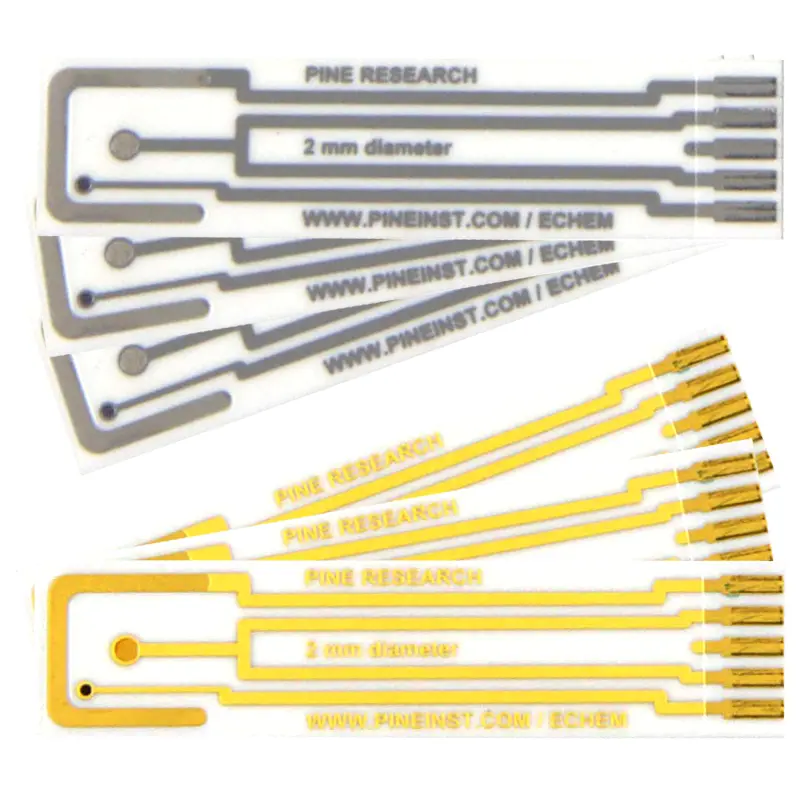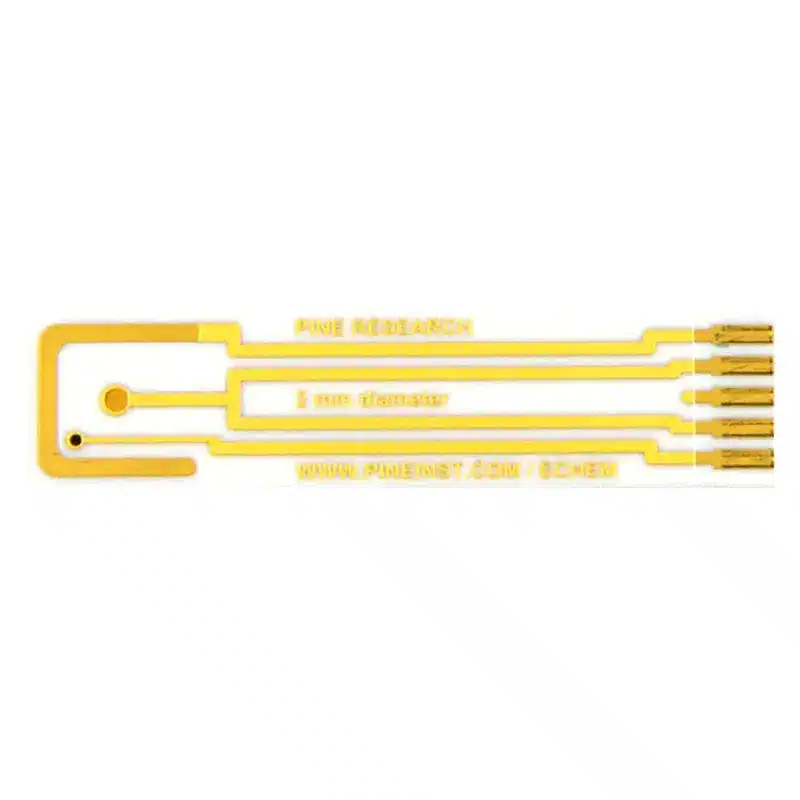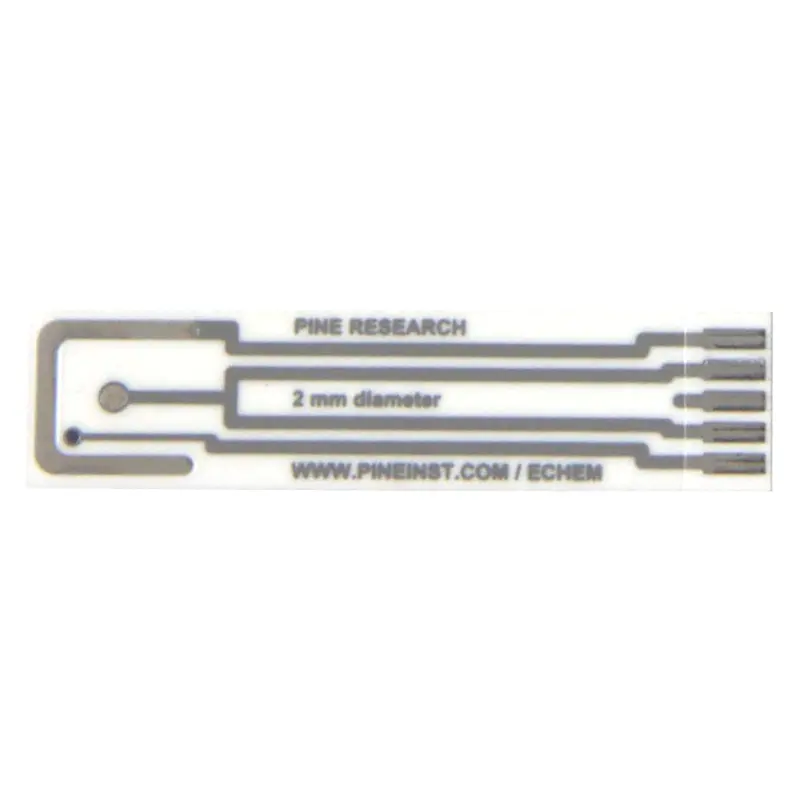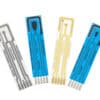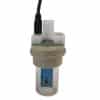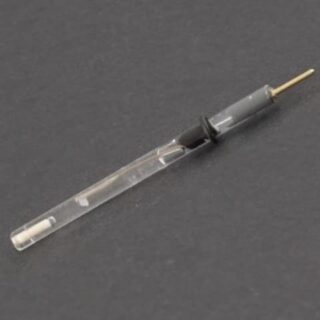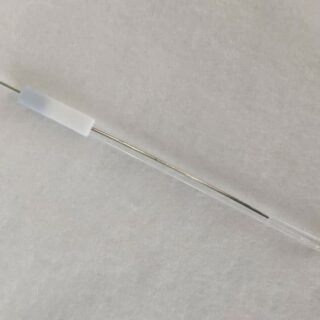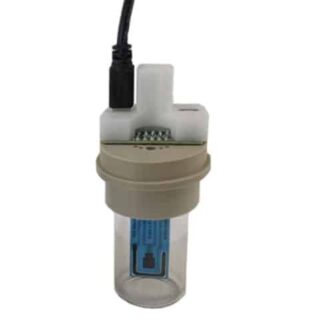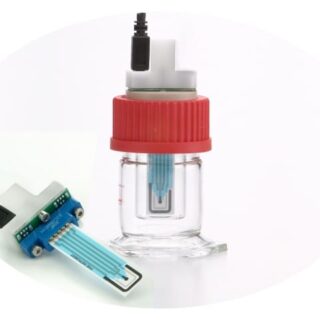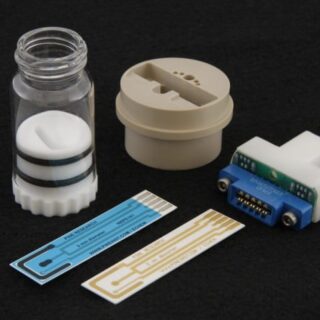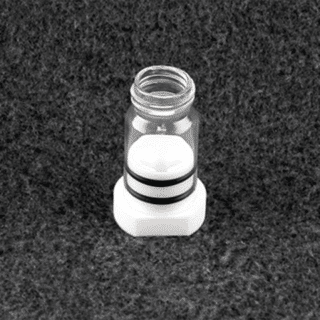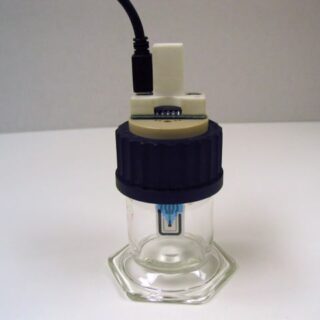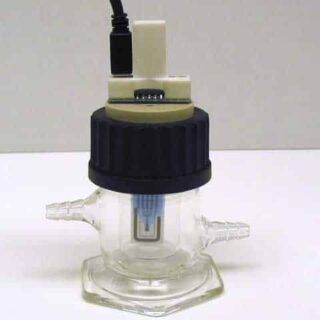Screen-Printed electrodes (SPE) are a cost-effective, simple way to approach electrochemical measurements. Most often, Pine Research screen-printed electrodes are used with Screen-Printed Electrode Cell Kit, where SPEs are installed into a grip that suspends the working, counter, and reference electrodes in a disposable 20-mL vial (cell) via the included cap. Also included with the kit is the Universal Specialty Cell Connection Kit, which enables the use of Pine Research SPEs and the cell kit with any potentiostat. These platinum and gold SPEs are available with different reference electrode finishes, including Ag/AgCl, Ag Pseudo, and without any reference chemistry (i.e., platinum or gold ink). As these SPEs can be cleaned and resused many times, we recommend also purchasing LowProfile reference electrodes, for continued use of these SPEs. This is because if you purchase these SPEs with a reference chemistry, like Ag/AgCl, this spot will wear over time and drift as the material wears. While it is possible to re-apply the reference, it is usually easier and preferred to use an external reference electrode. These electrodes are most commonly used for the following applications:
- Educational electrochemistry
- Biosensing/Bioanalytical measurements
- Glovebox electrochemistry
Educational Electrochemistry
When teaching electrochemistry, or the introductions to electrochemistry in undergraduate courses such as instrumental analysis, quantitative analysis, inorganic chemistry, etc., teaching experimental electrochemistry is not always easy. Your institution may not already have a workstation and electrodes and there may not be funding for something considered specialty. In addition, electrodes can be hundreds of dollars and may be easily damaged during use, especially by curious students who are trying to learn. In this space is where employing SPEs can help achieve educational goals without breaking the bank. SPEs are robust enough for students, yet precise enough to obtain quality measurements.
Biosensing and Bioanalytical Measurements
Many commercial biosensor applications share technology with screen-printed electrodes. Often, when the target analyte can be measured electrochemically either by direct or indirect methods, biosensors often take the form of a screen-printed electrodes. This is due to their inherent low-cost, disposability (and sterility, safety), reproducibility, and ease of mass production. One of the most commonly recognized commercial biosensors is the blood glucose test strip. The working electrode(s) in this biosensor are chemically modified for targeted, precise, and accurate measurements, but are screen-printed electrodes in their basic form. Research in the area of biosensors often turn to screen-printed electrodes at some point in their development. Carbon tends to be well-tolerated in biological environments, often called a biocompatible material, and can be implemented into bioanalytical measurements without as much concern over immune responses fouling the electrode surfaces.
Glovebox Electrochemistry
Over time, folks who routinely use a glovebox get used to their working conditions and become adept at manipulating things inside the glovebox. Performing air-sensitive electrochemistry can be frustrating, as you may not be able to easily clean and polish traditional electrodes, and handling them can be cumbersome via the gloves. For simple and routine electrochemical measurements, like determining the redox potential of a novel air sensitive molecule, is well suited to screen-printed electrodes. Since you do not polish them, they easily pass into the glovebox via the antechamber, and they are "plug and play" as compared to connecting your potentiostat cell cable leads to individual electrodes, researchers find them a simpler way to make routine electrochemical measurements in the glovebox. You can step it even more by using a WaveNow Wireless Electrochemical Workstation in conjunction with the screen-printed electrode cell kit - eliminating the data connection cable, and thus expensive feedthrough, required to perform electrochemistry in the glovebox.

